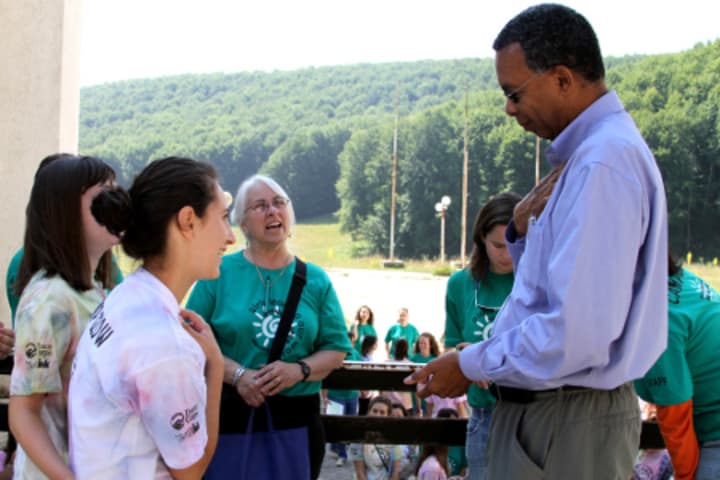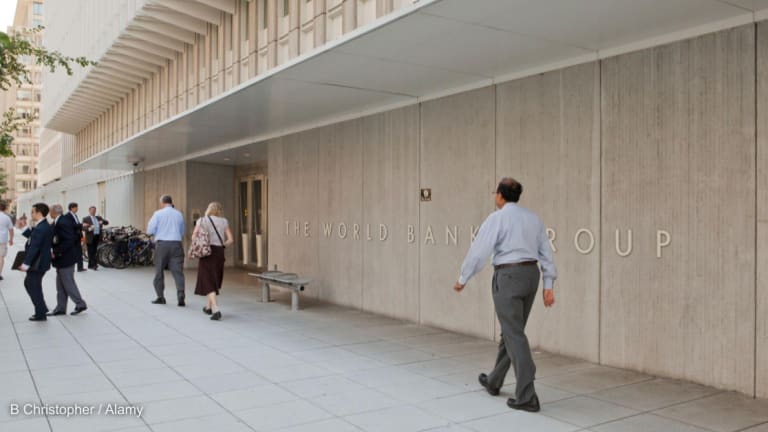
Forty-five years ago, Aaron Williams took what he has described as “the biggest risk I’d ever taken in my life.” The Chicago native applied for a nascent volunteer-abroad program championing world peace and friendship.
That program, of course, is the U.S. Peace Corps, which Williams has led since 2009. Now in its 50th year, the premier U.S. volunteer-abroad organization has lost little of its charm for Americans eager to provide technical assistance and engage in cultural exchange with people in Africa, Latin America and beyond.
“For me, like so many others, the Peace Corps was the beginning of everything,” Williams wrote in a recent op-ed. “It was the door to the rest of my life.”
Williams’ first experience with the Peace Corps took him to the Dominican Republic, where he worked as a teacher’s trainer before extending his service for a year to teach at the Universidad Católica Madre y Maestra in Santiago. Upon his return in 1970, he became coordinator of minority recruitment and project evaluation officer for the Peace Corps in Chicago.
Devex spoke with Williams about his vision for the Peace Corps and his focus on innovation, partnerships and recruiting volunteers with diverse backgrounds.
Fifty years after its foundation, where does the Peace Corps stand today?
We are delighted to commemorate 50 years of Peace Corps service. Since 1961, more than 200,000 Americans have served in 139 countries around the world. Today, 8,655 Americans serve as Peace Corps volunteers in 77 countries. Although times have changed, the agency remains true to its mission to promote world peace and friendship.
Throughout our history, the Peace Corps has adapted and responded to the issues of the times. In an ever-changing world, volunteers meet challenges with innovation, creativity, dedication and compassion. From AIDS education, malaria prevention, environmental preservation to income-generating ideas, Peace Corps volunteers help people build better lives for themselves.
What are you looking for in a Peace Corps volunteer; what skills and experiences should they bring to the table?
The Peace Corps is open to people of all ages. Eighty-five percent of our volunteers are recent college graduates, and they tend to be in the liberal arts. We recruit generalists, and we will train them in language, cross-cultural and technical skills that they need to be effective working in their communities.
But at the same time, you might be surprised to know that our oldest volunteer just completed her Peace Corps service. She is 86 years old and was a health volunteer in rural Morocco. So, the Peace Corps is open to the young and to seniors, people who are mature professionals, with special skills gained from many years of experience.
And the thing I think that’s most important about being a Peace Corps volunteer is that you have to be committed to being a change agent. We involve them in innovative ways to work in the community, at the grass-roots level, to make a difference in the lives of the people in those communities.
Is the Peace Corps the right place for a specialist who wants to work on a specific issue?
Volunteers hold positions of leadership and are challenged to work at the grass-roots level to create sustainable solutions. From teaching English as a second language, working in HIV/AIDS prevention and care programs, to providing advice and instruction on nutrition and food security issues, volunteers make a significant impact on local communities.
When volunteers arrive in their country of service, Peace Corps provides them with three months of training to develop language, cross-cultural, and technical skills needed to assist their community. Volunteers are trained to work in a variety of areas, including agriculture, business and information technology, education, environment, health and HIV/AIDS, and community and youth development.
How is the Peace Corps trying to encourage innovation?
I established the Peace Corps’s Office of Innovation to create greater efficiencies and effectiveness across the entire organization and help volunteers effectively share best practices with fellow volunteers around the world. This allows volunteers to implement the most effective techniques and develop the most impact in their communities.
Also, Peace Corps supports volunteers’ innovative use of technology. For example, volunteers revolutionized health education in Namibia through the use of text messaging. Young people could submit health-related questions, including topics related to HIV/AIDS, and have them answered in a safe and accessible way via mobile SMS. It’s a wonderful success story.
What we want to do at the Peace Corps is to make sure that in the 77 countries that we serve, we can take that lesson, that experience, that best practice that was identified in Namibia and offer it to the countries that we work in around the world.
How do you work with external partners to scale up innovative ideas such as the one you described?
The Peace Corps works in a genuine spirit of partnership and cooperation. It is inherent in everything that we do. Through partnerships, we are able to maximize the effectiveness of the more than 8,600 Peace Corps volunteers serving around the world.
Some non-governmental organizations that Peace Corps partners with include Population Services International, Save the Children, and the Special Olympics. We also partner with other U.S. government agencies and initiatives such as U.S. Agency for International Development, U.S. Environmental Protection Agency, the President’s Emergency Plan for AIDS Relief (PEPFAR), and the President’s Malaria Initiative.
How does an organization approach the Peace Corps with an idea for a partnership?
Organizations can approach Peace Corps staff at our headquarters in Washington, D.C., or 77 posts overseas.
Learn more about the Peace Corps:
Read more Peace Corps news.




